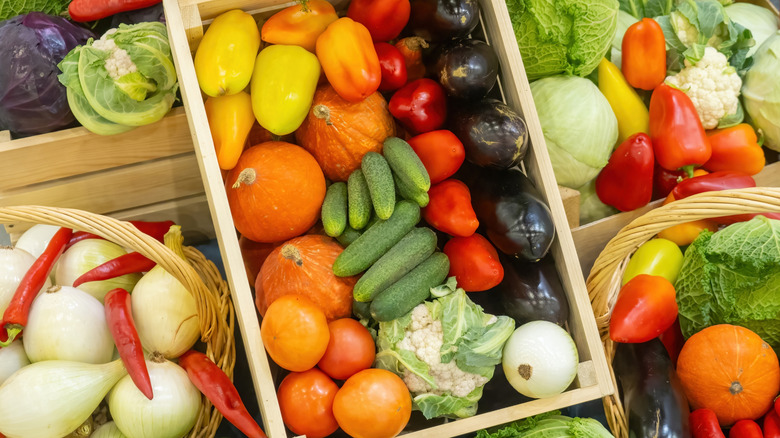
Kevin Dietsch/Getty Images
Anyone familiar with U.S. president Donald Trump’s preferred foods would be unlikely to use the word “healthy” to describe his diet. (Read about everything you’ll find in Donald Trump’s daily diet.)
For starters, the entrepreneur-politician has a well-documented fondness for fast food; from his social media updates to his campaign activities, the world has witnessed Trump cooking and serving his beloved McDonald’s fries to customers and digging into a bucket of KFC while sitting comfortably in his private jet. As a matter of fact, Trump’s former campaign advisors David Bossie and Corey Lewandowski have gone on record as calling Diet Coke, KFC, McDonald’s, and pizza “the four major food groups” that are ever-present on the president’s plane (via The Palm Beach Post).
In addition, Trump reportedly has quite the sweet tooth: he’s known to snack on Oreos and ice cream, wash down his dinner with a chocolate malt, and grab quick handfuls of Starburst fruit chews (only the red and pink ones, though). But apart from what you’ll find in Donald Trump’s candy bowl, what you generally won’t find on his plate is equally interesting.
Trump’s former Mar-a-Lago butler, Tony Senecal, told The Palm Beach Post in 2016 that whenever Trump asked for a steak, he wanted it well-done (even overcooked) and served with ketchup. He also emphasized wanting “no garbage with it,” meaning it should be served without any garnish, relishes, sauces, or vegetables.
Donald’s well-known dislike for greens

Stephen Lovekin/Getty Images
Technically, there is a bit of merit to Trump’s preferred style of eating steak. After all, skipping the sauces, garnishes, and relishes logically means reducing the overall caloric content of his meal, as well as reducing his salt and sugar intake (since those normally find their way into steak sauces and add-ons). But this also means he misses out on the opportunity to eat vegetables, which are foods that hardly ever touch his plate to begin with.
Speaking to CNN, a close acquaintance of Trump’s reportedly said that, aside from the occasional salad, he had “never seen [the president] eat a vegetable.” This is in line with comments from Trump’s former doctor, Ronny Jackson, who would reportedly sneak cauliflower into Trump’s mashed potatoes just to increase his vegetable intake (via The New York Times).
That’s not to say, of course, that Trump absolutely abhors vegetables or that he’s completely negligent about his health. “Mr. Trump’s wedge salad” — based on a recipe consisting of a chunk of iceberg lettuce slathered with blue cheese and dressing — is supposedly a mainstay on the Mar-a-Lago menu. Trump is also proud of the fact that he avoids beer and alcoholic beverages, a conscious choice he once called “one of [his] only good traits” (and his reason for not drinking alcohol has scientific backing).
What happens when you don’t eat enough vegetables

FOTOGRIN/Shutterstock
We’ve all heard about the importance of incorporating vegetables into one’s daily diet, as well as the consequences of not eating enough of them. Basically, skipping fruits and veggies means missing out on the health benefits they provide. This isn’t just a ploy that parents use to get their kids to finish their plates; science backs these ideas, too.
Based on the findings of a 2022 study in Nature Medicine, consuming up to 372 grams of vegetables per day resulted in “statistically significant protective effects” in terms of reducing a person’s risk of ischemic stroke (23.2%), ischemic heart disease (22.9%), hemorrhagic stroke (15.9%), and esophageal cancer (28.5%), as well as a 26.1% reduced risk of type 2 diabetes. Meanwhile, a 2017 paper in Dermatology Practical & Conceptual emphasized the need for various nutrients from fruits and vegetables — including antioxidants, vitamins A and E, and iron — in hair and nail growth.
Lastly, a 2020 review of 61 studies (published in Nutrients) determined that high fruit and vegetable intake had a beneficial effect on mental health (e.g., increased self-efficacy and optimism, decreased psychological distress), and recommended that individuals consume “at least 5 portions of fruit and vegetables a day” for enhanced mental and emotional wellness.
Credit: healthdigest.com










